Spring training is a time for fresh starts, optimism and lots and lots of questions. Think back to mid-February, when all 30 MLB teams were seeking answers to questions that would play a major role in how their seasons unfolded. Maybe it was an injury rehab or the impact of a new manager or an area of the roster crying out for improvement.
This week marks the quarter point of the 2017 season, so it seems like a handy time to take stock of those spring questions and assess how they're playing out. Some of the answers are positive, some not so positive. And with a lot of them, it's still too soon to judge.
The good
 Milwaukee Brewers: Is Eric Thames the real deal? It sure looks like it. After Thames signed a three-year, $16 million free-agent deal, some scouts wondered in spring training if he had the bat speed to successfully transition from Korea back to the big leagues. Those concerns vanished when Thames hit 11 homers and logged a 1.276 OPS in April. He's hitting .360 with a 1.000 slugging percentage against fastballs of 94 mph or faster, so big velocity doesn't appear to be a problem.
Milwaukee Brewers: Is Eric Thames the real deal? It sure looks like it. After Thames signed a three-year, $16 million free-agent deal, some scouts wondered in spring training if he had the bat speed to successfully transition from Korea back to the big leagues. Those concerns vanished when Thames hit 11 homers and logged a 1.276 OPS in April. He's hitting .360 with a 1.000 slugging percentage against fastballs of 94 mph or faster, so big velocity doesn't appear to be a problem.
Thames has swung at only 20.5 percent of pitches outside the strike zone -- the ninth-best ratio in the majors -- and he's on a pace to draw more than 100 walks. That patience will serve him well as the league learns his weaknesses and tries to exploit them.
"Early on, it didn't look like he was catching up to the good fastballs," said a scout. "But it's dangerous to make judgments in spring training, especially with a guy who's coming back over here and getting acclimated again. I've been impressed with him. I was concerned about him being a regular player, and he's definitely going to be that. I think he'll wind up hitting 25 homers a season."
 Houston Astros: Is the rotation strong enough to vault them to contention? The lineup was strong enough, without question, but the Astros had reason to wonder if Dallas Keuchel, Lance McCullers Jr., Charlie Morton, Joe Musgrove and Mike Fiers could survive the rigors of a 162-game season. Collin McHugh went down with an elbow impingement in spring training, and he isn't expected back until after the All-Star break.
Houston Astros: Is the rotation strong enough to vault them to contention? The lineup was strong enough, without question, but the Astros had reason to wonder if Dallas Keuchel, Lance McCullers Jr., Charlie Morton, Joe Musgrove and Mike Fiers could survive the rigors of a 162-game season. Collin McHugh went down with an elbow impingement in spring training, and he isn't expected back until after the All-Star break.
The group has been sharp, with a 20-10 record and a 3.71 ERA. Keuchel was pitching like a Cy Young candidate until going on the disabled list with a pinched nerve in his neck. McCullers hasn't allowed an earned run in his past 19 innings, and Morton is averaging 10.48 strikeouts per nine innings. Still, it won't surprise anyone if general manager Jeff Luhnow pursues another starter at the trade deadline.
 New York Yankees: Are the kids ready for prime time? The rotation of CC Sabathia, Michael Pineda, Luis Severino, Masahiro Tanaka and Jordan Montgomery has made all its starts and done its share to help the Yankees get off to 25-16 start. But the biggest reason for excitement in the Bronx revolves around general manager Brian Cashman's youth movement.
New York Yankees: Are the kids ready for prime time? The rotation of CC Sabathia, Michael Pineda, Luis Severino, Masahiro Tanaka and Jordan Montgomery has made all its starts and done its share to help the Yankees get off to 25-16 start. But the biggest reason for excitement in the Bronx revolves around general manager Brian Cashman's youth movement.
Aaron Judge recently joined Mickey Mantle, Babe Ruth, Alex Rodriguez and Tino Martinez as the fifth player in Yankees history to hit 15 homers in the first 40 games of a season. He combines with catcher Gary Sanchez to give New York a dynamic one-two punch in the 25-and-under category. Aaron Hicks is off to a terrific start, and fellow 27-year-old Starlin Castro has taken his game to another level.
 Colorado Rockies: Will new manager Bud Black's expertise and enthusiasm result in better pitching in Colorado? So far, so good. The Rockies lead the National League West with a 28-17 record, and they've done it without Chad Bettis, who is undergoing treatment for testicular cancer, and Jon Gray, who went down with a stress fracture in his foot after three starts and isn't expected to return until mid-June.
Colorado Rockies: Will new manager Bud Black's expertise and enthusiasm result in better pitching in Colorado? So far, so good. The Rockies lead the National League West with a 28-17 record, and they've done it without Chad Bettis, who is undergoing treatment for testicular cancer, and Jon Gray, who went down with a stress fracture in his foot after three starts and isn't expected to return until mid-June.
Black, pitching coach Steve Foster and bullpen coach Darren Holmes have coaxed some fine work out of rookies Antonio Senzatela and Kyle Freeland and a deep pen led by closer Greg Holland. One big factor for the Rockies: The staff as a whole has done a better job of pitching inside this year, especially at Coors Field.
 Tampa Bay Rays: Can Corey Dickerson and Steven Souza Jr. assert themselves and upgrade an offense that ranked 14th in the American League in runs in 2016? In Dickerson's case, the answer is a big yes. He's fourth in the league with a 1.032 OPS and living up to the expectations of Rockies people who thought he was capable of winning a batting title one day. Dickerson struggled in his transition to the AL in 2016, but he dropped 25 pounds over the winter and looks like a new man at the plate and in the field. And though Souza strikes out a ton, he continues to flash big power and has a .356 OBP.
Tampa Bay Rays: Can Corey Dickerson and Steven Souza Jr. assert themselves and upgrade an offense that ranked 14th in the American League in runs in 2016? In Dickerson's case, the answer is a big yes. He's fourth in the league with a 1.032 OPS and living up to the expectations of Rockies people who thought he was capable of winning a batting title one day. Dickerson struggled in his transition to the AL in 2016, but he dropped 25 pounds over the winter and looks like a new man at the plate and in the field. And though Souza strikes out a ton, he continues to flash big power and has a .356 OBP.
"I don't know where we'd be without those two guys," said Chaim Bloom, the Rays' senior vice president of baseball operations. "They've carried us at times, whether they're hitting at the top of the order or the middle of it. They both look comfortable and relaxed. They really look like they've settled in."
The Rays also made a prudent offseason move when they brought back Logan Morrison on a one-year, $2.5 million contract. He already has hit 11 homers while slugging .525.
 Texas Rangers: Do they have enough starting pitching behind Yu Darvish, Cole Hamels and Martin Perez to defend their AL West title? The Rangers rank second in the majors with a 3.54 starter ERA, but things haven't unfolded the way anyone expected. While Darvish is pitching well and bolstering his case for a huge free-agent payday in November, Hamels is out until July with an oblique injury and Perez is lugging around an unsightly 1.57 WHIP.
Texas Rangers: Do they have enough starting pitching behind Yu Darvish, Cole Hamels and Martin Perez to defend their AL West title? The Rangers rank second in the majors with a 3.54 starter ERA, but things haven't unfolded the way anyone expected. While Darvish is pitching well and bolstering his case for a huge free-agent payday in November, Hamels is out until July with an oblique injury and Perez is lugging around an unsightly 1.57 WHIP.
A.J. Griffin and Andrew Cashner have filled the void and recently helped Texas reel off a 10-game winning streak. Cashner has 19 strikeouts and 21 walks, so his success has a bit of an illusory feel to it. And Griffin came back to earth when he allowed nine runs in 3⅓ innings against Detroit on Saturday. They'll both be challenged to maintain their early success over the next four months.
 Arizona Diamondbacks: Can Zack Greinke recover from a disappointing season and pitch like a $206.5 million man? Greinke's pokey, upper-80s radar gun readings were a source of concern in the Cactus League. But he's throwing his fastball at a more serviceable 90.6 mph during the regular season, and his slider has been so sharp that he's using it a career-high 26 percent of the time. Colorado's Nolan Arenado recently said Arizona's ace looks like the "Greinke of old."
Arizona Diamondbacks: Can Zack Greinke recover from a disappointing season and pitch like a $206.5 million man? Greinke's pokey, upper-80s radar gun readings were a source of concern in the Cactus League. But he's throwing his fastball at a more serviceable 90.6 mph during the regular season, and his slider has been so sharp that he's using it a career-high 26 percent of the time. Colorado's Nolan Arenado recently said Arizona's ace looks like the "Greinke of old."
The rest of Arizona's rotation has been a mixed bag. While Taijuan Walker continues to make positive strides, Patrick Corbin and Robbie Ray have been up and down, and Shelby Miller is done for the year after Tommy John surgery.
 Kansas City Royals: Can the rotation compete for an AL Central title without Yordano Ventura? When Ventura died in a car accident in January, the emotional scars were profound. The Royals were gearing up to make a run as Eric Hosmer, Mike Moustakas, Lorenzo Cain and Alcides Escobar entered their free-agent walk years, and suddenly, their most talented pitcher and beloved teammate was gone. GM Dayton Moore signed Jason Hammel in early February to help fill the innings void. Hammel has been a bust, but the foursome of Jason Vargas, Danny Duffy, Nate Karns and Ian Kennedy has been more than good enough to keep the Royals in games. Kansas City's starters rank fourth in the league with an aggregate 3.85 ERA.
Kansas City Royals: Can the rotation compete for an AL Central title without Yordano Ventura? When Ventura died in a car accident in January, the emotional scars were profound. The Royals were gearing up to make a run as Eric Hosmer, Mike Moustakas, Lorenzo Cain and Alcides Escobar entered their free-agent walk years, and suddenly, their most talented pitcher and beloved teammate was gone. GM Dayton Moore signed Jason Hammel in early February to help fill the innings void. Hammel has been a bust, but the foursome of Jason Vargas, Danny Duffy, Nate Karns and Ian Kennedy has been more than good enough to keep the Royals in games. Kansas City's starters rank fourth in the league with an aggregate 3.85 ERA.
The problem is, the offense has disappeared. The Royals rank last in the AL with 145 runs, and no other club is close. Brandon Moss, Alex Gordon, Escobar and Jorge Soler, all batting below .200, have been the principal culprits in the team's slow start.
The bad
 Pittsburgh Pirates: Can Andrew McCutchen regain his old MVP form after a down year? After listening to trade rumors all winter, McCutchen had to deal with the indignity of being moved to right field, while Starling Marte took over in center. The new arrangement lasted all of two weeks, until Marte incurred an 80-game suspension for use of performance-enhancing drugs.
Pittsburgh Pirates: Can Andrew McCutchen regain his old MVP form after a down year? After listening to trade rumors all winter, McCutchen had to deal with the indignity of being moved to right field, while Starling Marte took over in center. The new arrangement lasted all of two weeks, until Marte incurred an 80-game suspension for use of performance-enhancing drugs.
McCutchen is back in his comfort zone in center, but his offensive issues persist. He's hitting .211 through 43 games and showing few signs that he's ready to go on a sustained run.
"Once in a while, you still see the ball jump off his bat like it used to," said a scout. "But I don't like his setup at the plate and where his hands are. It seems like he's late getting the bat to the ball out in front of the plate -- especially on the better fastballs."
Big velocity has become a major problem for McCutchen. In 2012, the best statistical season of his career, he slugged .672 against fastballs of 94 mph and above. This year, he's slugging .281 against those pitches. He's putting the ball in play but with no authority.
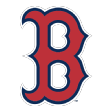 Boston Red Sox: Can the offense remain elite without David Ortiz in the cleanup spot? The Red Sox led the majors with 878 runs last year while Big Papi was collecting oil paintings and bottles of wine on his farewell tour. So it was natural to wonder: How much would they miss him in his retirement? As it turns out, a lot. Boston ranks 16th in the majors in runs and last in the American League in homers. Mookie Betts is having another MVP-caliber season. But Pablo Sandoval got hurt, Hanley Ramirez has been so-so and Xander Bogaerts is homerless in his first 167 plate appearances. Rookie Andrew Benintendi has fallen off lately in the cleanup spot after a strong start.
Boston Red Sox: Can the offense remain elite without David Ortiz in the cleanup spot? The Red Sox led the majors with 878 runs last year while Big Papi was collecting oil paintings and bottles of wine on his farewell tour. So it was natural to wonder: How much would they miss him in his retirement? As it turns out, a lot. Boston ranks 16th in the majors in runs and last in the American League in homers. Mookie Betts is having another MVP-caliber season. But Pablo Sandoval got hurt, Hanley Ramirez has been so-so and Xander Bogaerts is homerless in his first 167 plate appearances. Rookie Andrew Benintendi has fallen off lately in the cleanup spot after a strong start.
As clichéd as it sounds, Ortiz had a presence that was difficult to replace. In an interview with Scott Lauber of ESPN, Cubs manager Joe Maddon compared Ortiz with Lawrence Taylor on the football field or Michael Jordan or Larry Bird on the basketball court.
"You always knew where David Ortiz was in the batting order," Maddon said. "So, it's different [without him]."
 Detroit Tigers: Can Francisco Rodriguez still be an effective closer at age 35? K-Rod's fastball is clocking in at 88.5 mph, the lowest of his career, and the 5 mph spread between his heater and his changeup is too close for comfort. He also has had difficulty commanding the fastball, and his first-pitch strike percentage of 53.3 is down markedly from the past several years. When he's behind in the count, it's a lot easier for hitters to lay off the change.
Detroit Tigers: Can Francisco Rodriguez still be an effective closer at age 35? K-Rod's fastball is clocking in at 88.5 mph, the lowest of his career, and the 5 mph spread between his heater and his changeup is too close for comfort. He also has had difficulty commanding the fastball, and his first-pitch strike percentage of 53.3 is down markedly from the past several years. When he's behind in the count, it's a lot easier for hitters to lay off the change.
Justin Wilson has been fine since replacing Rodriguez as Detroit's closer, and Alex Wilson and Shane Greene have pitched well as the prime setup men. But Rodriguez and Anibal Sanchez have been so ineffective that manager Brad Ausmus is afraid to use them in high-leverage situations. If Ausmus isn't careful, he could burn out his three best relievers by the All-Star break.
 Minnesota Twins: Can Byron Buxton build on his big final month and have a breakout 2017? Buxton, the No. 2 pick in the 2012 first-year player draft behind Carlos Correa, hit .287 with a 1.011 OPS in September to salvage a trying season. But it has been a slog so far this year. He's striking out 34 percent of the time, and the Twins might have heaped more pressure on him than necessary when they inserted him in the No. 3 spot on Opening Day.
Minnesota Twins: Can Byron Buxton build on his big final month and have a breakout 2017? Buxton, the No. 2 pick in the 2012 first-year player draft behind Carlos Correa, hit .287 with a 1.011 OPS in September to salvage a trying season. But it has been a slog so far this year. He's striking out 34 percent of the time, and the Twins might have heaped more pressure on him than necessary when they inserted him in the No. 3 spot on Opening Day.
Buxton has raised his average from .082 to .171 since April 20, and he's tied for second behind Jackie Bradley Jr. among MLB center fielders with six defensive runs saved, so the Twins have reason to hope he's on the right path. They've tried to hasten the growth process by having special assistant Torii Hunter work with him whenever his schedule permits.
 Miami Marlins: Can the pitching staff recover from the death of Jose Fernandez? With limited resources, the Marlins did their best over the winter to replace their most charismatic player and staff ace. They swung a trade for Cincinnati's Dan Straily, signed free agents Edinson Volquez and Jeff Locke and fortified the bullpen with the addition of Brad Ziegler and Junichi Tazawa.
Miami Marlins: Can the pitching staff recover from the death of Jose Fernandez? With limited resources, the Marlins did their best over the winter to replace their most charismatic player and staff ace. They swung a trade for Cincinnati's Dan Straily, signed free agents Edinson Volquez and Jeff Locke and fortified the bullpen with the addition of Brad Ziegler and Junichi Tazawa.
The results have been abysmal. Miami's starters are 8-19 with a 5.06 ERA and an MLB-low 13 quality starts, and the new-look bullpen has been a major disappointment. Unless manager Don Mattingly finds a way to turn things around in a hurry, the only thing worth monitoring in Miami this summer will be franchise sale updates.
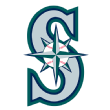 Seattle Mariners: Would Jerry Dipoto's moves lead to Seattle's first postseason appearance since 2001? After Seattle's general manager made 15 offseason trades, he pronounced the Mariners in "win now" mode in 2017. The end result? Not enough winning and a mother lode of regular-season transactions.
Seattle Mariners: Would Jerry Dipoto's moves lead to Seattle's first postseason appearance since 2001? After Seattle's general manager made 15 offseason trades, he pronounced the Mariners in "win now" mode in 2017. The end result? Not enough winning and a mother lode of regular-season transactions.
The Mariners have been crushed by injuries to Robinson Cano, Felix Hernandez, Hisashi Iwakuma, Mitch Haniger and others, but some of their rotation and bullpen issues had become readily apparent in spring training. It also didn't help when center fielder Leonys Martin and catcher Mike Zunino played their way to the minors a month into the season.
The constant roster churning has been exhausting to watch. According to the Mariners' public relations staff, the team made 74 transactions involving the 40-man roster in the first 49 days of the season. That averages out to one transaction every 15 hours and 53 minutes.
 Atlanta Braves: Do R.A. Dickey and Bartolo Colon have enough left in the tank to lead the pitching staff? The Braves pounced on the two 40-somethings early in the offseason, and the early results haven't been great. While Dickey (3-3, 4.13) has been serviceable, Colon has been ineffective in five straight appearances and has given Atlanta a mere two quality starts in nine outings.
Atlanta Braves: Do R.A. Dickey and Bartolo Colon have enough left in the tank to lead the pitching staff? The Braves pounced on the two 40-somethings early in the offseason, and the early results haven't been great. While Dickey (3-3, 4.13) has been serviceable, Colon has been ineffective in five straight appearances and has given Atlanta a mere two quality starts in nine outings.
Unless the Braves were able to vault into contention mode this year, general manager John Coppolella figured to make both pitchers available in July. But with the Royals, Blue Jays, White Sox and even the Giants (Johnny Cueto) and Mets potentially in sell mode at the deadline, it's hard to envision the Braves finding a very active market for either Colon or Dickey.
 Oakland Athletics: Will the A's do a better job of catching the ball this season? Oakland ranked last in the majors with a minus-71 defensive runs saved in 2016, according to Baseball Info Solutions. The A's are on a similar pace this year, with a minus-19 DRS at the quarter mark.
Oakland Athletics: Will the A's do a better job of catching the ball this season? Oakland ranked last in the majors with a minus-71 defensive runs saved in 2016, according to Baseball Info Solutions. The A's are on a similar pace this year, with a minus-19 DRS at the quarter mark.
That's not exactly a nurturing environment for a young pitching staff. But the A's always are limited with their free-agent options, and they're trying to give third baseman Matt Chapman and shortstop Franklin Barreto as much time as possible to polish their games before promoting them from the minors.
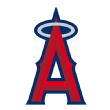 Los Angeles Angels: Did general manager Billy Eppler give Mike Trout enough help for the Angels to make a playoff run? With no prospects to trade and only so much money to spend, Eppler dabbled around the edges during the offseason. He acquired Cameron Maybin, Danny Espinosa, Ben Revere and Luis Valbuena in hopes of complementing the core group of Trout, Albert Pujols and Kole Calhoun.
Los Angeles Angels: Did general manager Billy Eppler give Mike Trout enough help for the Angels to make a playoff run? With no prospects to trade and only so much money to spend, Eppler dabbled around the edges during the offseason. He acquired Cameron Maybin, Danny Espinosa, Ben Revere and Luis Valbuena in hopes of complementing the core group of Trout, Albert Pujols and Kole Calhoun.
Espinosa is hitting .152 with 50 strikeouts in 132 at-bats, and the other new additions haven't been appreciably better. Given the Angels' nondescript rotation and stunning array of injuries to the bullpen, it's a wonder they're still hanging around .500.
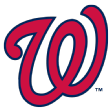 Washington Nationals: Will GM Mike Rizzo be able to solve the closer riddle? Bryce Harper answered one big question when he made it clear he has regained his 2015 MVP form. But uncertainty continues to swirl at the back end of the bullpen. The Nationals have 12 saves this season, and they've been divvied up among Blake Treinen, Koda Glover, Shawn Kelley, Enny Romero and Matt Albers, who recently recorded his first big league save in his 461st career appearance.
Washington Nationals: Will GM Mike Rizzo be able to solve the closer riddle? Bryce Harper answered one big question when he made it clear he has regained his 2015 MVP form. But uncertainty continues to swirl at the back end of the bullpen. The Nationals have 12 saves this season, and they've been divvied up among Blake Treinen, Koda Glover, Shawn Kelley, Enny Romero and Matt Albers, who recently recorded his first big league save in his 461st career appearance.
Rizzo will almost certainly go shopping at the trade deadline, but the options aren't nearly as appealing as last summer, when Aroldis Chapman, Andrew Miller and Mark Melancon were on the market. Kelvin Herrera, David Robertson, Alex Colome, Tony Watson and Ryan Madson are among the potential closers the Nationals could be targeting.
 San Francisco Giants: Can Jarrett Parker and Mac Williamson fill the void in left field? The Giants refrained from dipping into the free-agent market and decided to let Parker, 28, and Williamson, 26, have at it in Arizona. They hoped one or both could enjoy the type of breakout that former Giant Adam Duvall experienced in Cincinnati last season.
San Francisco Giants: Can Jarrett Parker and Mac Williamson fill the void in left field? The Giants refrained from dipping into the free-agent market and decided to let Parker, 28, and Williamson, 26, have at it in Arizona. They hoped one or both could enjoy the type of breakout that former Giant Adam Duvall experienced in Cincinnati last season.
The results have been ugly. Manager Bruce Bochy has started nine players in left field, and Gorkys Hernandez, Chris Marrero, Eduardo Nunez, Brandon Belt and the others are batting a combined .201 with three home runs in 169 at-bats. Parker has been out since late April with a broken collarbone, and Williamson missed time with a quad injury before rejoining the big club last week.
 San Diego Padres: Can they avoid setting a franchise record for losses? The 1969 Padres went 52-110 under manager Preston Gomez in their first year as an expansion team.
San Diego Padres: Can they avoid setting a franchise record for losses? The 1969 Padres went 52-110 under manager Preston Gomez in their first year as an expansion team.
Chances are this Padres team will be better than that -- but not by much. The young Pads showed some feistiness under manager Andy Green by getting off to a 12-16 start, but they've gone 4-14 since and are last in the majors with a run differential of minus-85. Wil Myers doesn't have much help in the batting order, and the pitching is shaky, at best. Jered Weaver, signed in February to add veteran stability, has allowed 16 home runs in 42⅓ innings, and he just went on the DL with a hip injury.
 New York Mets: Can the rotation remain healthy and productive? "We've got to stay healthy," manager Terry Collins said in response to Noah Syndergaard's blood blister on Opening Day. "We've preached it and preached it and preached it, and now we've got to act on it."
New York Mets: Can the rotation remain healthy and productive? "We've got to stay healthy," manager Terry Collins said in response to Noah Syndergaard's blood blister on Opening Day. "We've preached it and preached it and preached it, and now we've got to act on it."
So much for good intentions.
Jacob deGrom has bounced back nicely from elbow surgery, with the exception of some command issues here and there, and Zack Wheeler continues to make progress in his comeback from Tommy John surgery. But that's where the good news ends. Syndergaard's torn lat muscle was a major setback, and Matt Harvey has some significant obstacles to overcome on and off the field. Steven Matz and Seth Lugo have begun injury rehab assignments, so some help might be on the way.
 Cincinnati Reds: Can the rotation maintain a semblance of competitiveness? It was an ominous sign when Scott Feldman -- who figured to be either the No. 5 starter or a bullpen guy -- started on Opening Day against the Phillies. The Reds also are trying to squeeze whatever they can get out of 40-year-old Bronson Arroyo. Amir Garrett has shown some promise, but Rookie Davis lasted a mere five starts before being shipped to the minors.
Cincinnati Reds: Can the rotation maintain a semblance of competitiveness? It was an ominous sign when Scott Feldman -- who figured to be either the No. 5 starter or a bullpen guy -- started on Opening Day against the Phillies. The Reds also are trying to squeeze whatever they can get out of 40-year-old Bronson Arroyo. Amir Garrett has shown some promise, but Rookie Davis lasted a mere five starts before being shipped to the minors.
Manager Bryan Price already has used nine starters, and they've combined for an MLB-worst 5.93 ERA. Things could improve if Brandon Finnegan, Anthony DeSclafani and the perpetually injured Homer Bailey return over the next couple of months. But the combination of youth, a lack of talent and the hitter-friendly environs at Great American Ball Park could make for a lot of 12-8 games in Cincinnati this summer.
Still to be determined
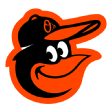 Baltimore Orioles: Is the starting rotation good enough to compete with the iron of the American League East? Dylan Bundy and Wade Miley carried the load until Chris Tillman returned from a shoulder injury. But Ubaldo Jimenez remains an enigma, and Kevin Gausman has been shockingly bad. His strikeouts are down, and his 1.86 WHIP and .328 batting average against reflect the extent of his struggles.
Baltimore Orioles: Is the starting rotation good enough to compete with the iron of the American League East? Dylan Bundy and Wade Miley carried the load until Chris Tillman returned from a shoulder injury. But Ubaldo Jimenez remains an enigma, and Kevin Gausman has been shockingly bad. His strikeouts are down, and his 1.86 WHIP and .328 batting average against reflect the extent of his struggles.
Gausman's fastball still is registering 95 mph on the gun, so it's not a question of a lack of stuff. The Orioles were counting on him to take a step forward and assert himself as a No. 1 or No. 2 starter at age 26. But right now, Gausman is in a rut, and the Orioles haven't been able to push the right buttons to get him on track.
 Toronto Blue Jays: Will Jose Bautista get his revenge on teams who ignored him on the free-agent market? Joey Bats remained unsigned until mid-January, when he agreed to a one-year, $18 million deal to return to Toronto. Given his competitive nature, he figured to be ultra-motivated to prove he still has something left at age 36.
Toronto Blue Jays: Will Jose Bautista get his revenge on teams who ignored him on the free-agent market? Joey Bats remained unsigned until mid-January, when he agreed to a one-year, $18 million deal to return to Toronto. Given his competitive nature, he figured to be ultra-motivated to prove he still has something left at age 36.
After a pathetic start, Bautista has come to life with six home runs and a .603 slugging percentage in May. He's seeing only 48 percent fastballs -- the lowest mark of his career -- and it doesn't help that Edwin Encarnacion is gone and Josh Donaldson and Troy Tulowitzki have both spent time on the disabled list.
"He's smart," an AL scout said of Bautista. "He knows what he can handle, and he's still a good mistake hitter. His bat has slowed a little bit, and he has to cheat a little against the real power pitchers. But guys make enough mistakes in the big leagues and don't execute enough that he's still going to do his damage."
 St. Louis Cardinals: Can Dexter Fowler provide stability at the top of the order, upgrade the outfield defense and bring some winning magic from Chicago? Fowler has given the Cardinals some pop and a .313 OBP out of the leadoff spot, but the advanced metrics haven't been kind to his defense. He is tied for next to last among center fielders in Baseball Info Solutions calculations with minus-6 defensive runs saved.
St. Louis Cardinals: Can Dexter Fowler provide stability at the top of the order, upgrade the outfield defense and bring some winning magic from Chicago? Fowler has given the Cardinals some pop and a .313 OBP out of the leadoff spot, but the advanced metrics haven't been kind to his defense. He is tied for next to last among center fielders in Baseball Info Solutions calculations with minus-6 defensive runs saved.
Manager Mike Matheny made defense, baserunning and fundamentals the points of emphasis in the Grapefruit League, and some of that work appears to be paying dividends. According to Baseball Prospectus, St. Louis' team defensive efficiency has improved from .696 (24th best in the majors) to .711 (13th best) from last year to this season.
 Los Angeles Dodgers: Do they have enough support for Clayton Kershaw in the rotation? Alex Wood has been terrific, but the rest of the rotation consists of a bunch of guys waiting in line for a date with the X-ray machine or the MRI tube.
Los Angeles Dodgers: Do they have enough support for Clayton Kershaw in the rotation? Alex Wood has been terrific, but the rest of the rotation consists of a bunch of guys waiting in line for a date with the X-ray machine or the MRI tube.
Scott Kazmir has yet to pitch this season because of a hip strain, and Brandon McCarthy (shoulder), Rich Hill (blister problems), Kenta Maeda (hamstring tightness) and Hyun-Jin Ryu (left hip contusion) all have visited the new 10-day disabled list, which seems ready-made for Los Angeles' contingent of pitchers living on the edge. The Dodgers have enough talent to be formidable if they get to the postseason. But the tenuous health of the staff will force manager Dave Roberts to be awfully nimble over the next four months.
 Philadelphia Phillies: Can they hit enough? After finishing last in the National League with 610 in runs, the Phillies fired hitting coach Steve Henderson and brought Matt Stairs down from the broadcast booth to replace him. The Phils have vaulted to the middle of the pack in runs and OPS, but it's attributable to some unexpected sources.
Philadelphia Phillies: Can they hit enough? After finishing last in the National League with 610 in runs, the Phillies fired hitting coach Steve Henderson and brought Matt Stairs down from the broadcast booth to replace him. The Phils have vaulted to the middle of the pack in runs and OPS, but it's attributable to some unexpected sources.
Howie Kendrick has been out since April 16 with an oblique injury, Michael Saunders has a .279 OBP and Odubel Herrera and Maikel Franco are both mired in sub-.700 OPS land. But outfielder Aaron Altherr has emerged as a power threat, and second baseman Cesar Hernandez is starting to look like an All-Star in the making.
So why are the Phillies off to such a rough start? In large part, it's because of a lack of consistency from the rotation and several meltdowns by the bullpen, which was considered a team strength on Opening Day.
 Chicago Cubs: Can the rotation match its performance in 2016, when the Cubs led the majors in ERA and won 103 games and a World Series? To this point, no. Entering Sunday's action, the Cubs' and Rockies' starting rotations sported matching 4.47 ERAs. Just as telling, Chicago's starters ranked 12th in the NL in innings. Jon Lester, John Lackey & Co. want to go deeper into games, but they're going to have to start pitching better for manager Joe Maddon to give them more rope.
Chicago Cubs: Can the rotation match its performance in 2016, when the Cubs led the majors in ERA and won 103 games and a World Series? To this point, no. Entering Sunday's action, the Cubs' and Rockies' starting rotations sported matching 4.47 ERAs. Just as telling, Chicago's starters ranked 12th in the NL in innings. Jon Lester, John Lackey & Co. want to go deeper into games, but they're going to have to start pitching better for manager Joe Maddon to give them more rope.
Jake Arrieta, in particular, needs to step up his game. His 1.40 WHIP and 4.80 ERA bear little resemblance to the dominant Arrieta of two years ago, and he has surrendered eight home runs in his first eight starts. He's not exactly barreling into free agency.
The NL Central is weak enough that the Cubs have been able to hang around, despite a 22-20 start. If they plan to go on an extended roll, the starters will have to provide the impetus.
 Cleveland Indians: Can some pivotal pitchers avoid the dreaded October hangover? Corey Kluber, who made three starts on short rest in October and threw a career-high 249⅓ innings between the regular season and the postseason, went on the disabled with a back injury in early May. He is about to go on a rehab assignment with an eye on rejoining the big club in late May. Mike Clevinger slid into the rotation when Kluber got hurt, and he is making a strong case to stick around once Kluber returns.
Cleveland Indians: Can some pivotal pitchers avoid the dreaded October hangover? Corey Kluber, who made three starts on short rest in October and threw a career-high 249⅓ innings between the regular season and the postseason, went on the disabled with a back injury in early May. He is about to go on a rehab assignment with an eye on rejoining the big club in late May. Mike Clevinger slid into the rotation when Kluber got hurt, and he is making a strong case to stick around once Kluber returns.
Andrew Miller and Cody Allen, who combined to throw 33 stress-filled innings in the postseason, have shown zero ill effects from their big October workloads. They've combined for 57 strikeouts and a 0.93 ERA in 38⅔ innings.
 Chicago White Sox: When does the next wave arrive? When GM Rick Hahn traded Chris Sale and Adam Eaton in December, the White Sox ostensibly threw up the white flag on contending in 2017.
Chicago White Sox: When does the next wave arrive? When GM Rick Hahn traded Chris Sale and Adam Eaton in December, the White Sox ostensibly threw up the white flag on contending in 2017.
Yoan Moncada is slashing .331/.401/.504 with Triple-A Charlotte and making a strong case for a promotion. Michael Kopech has 59 strikeouts in 42⅓ innings with Double-A Birmingham, but he has walked 23 batters and could stand to refine his command.
"We think the world of his talent and future, and we think he is responding to the challenges we put ahead of him, but we're not going to rush this," Hahn recently told the Chicago media when asked about Moncada. "He'll be here when he answers all the questions we have for him with the developmental standpoint at the minor league level."
